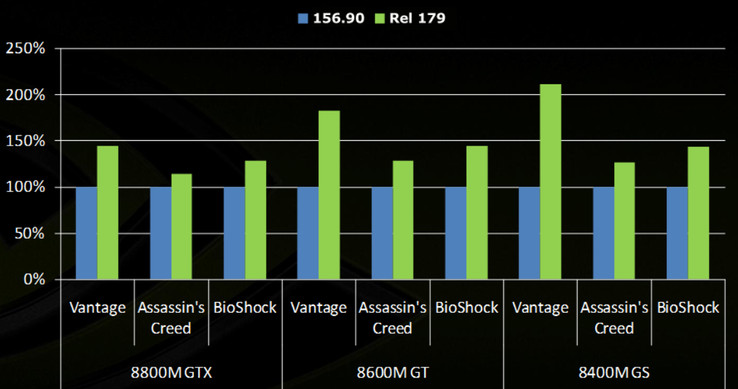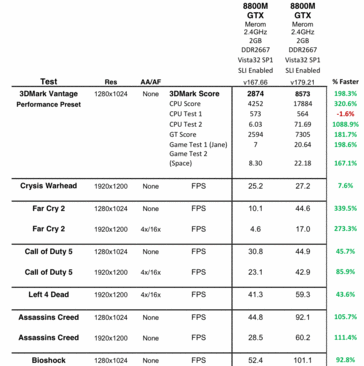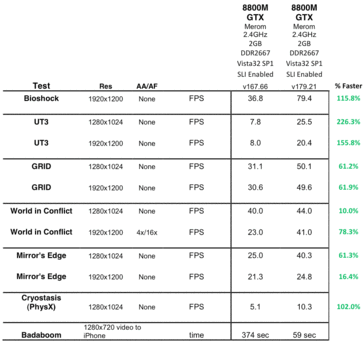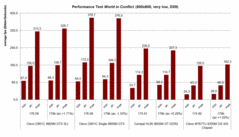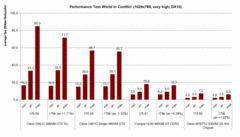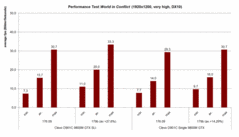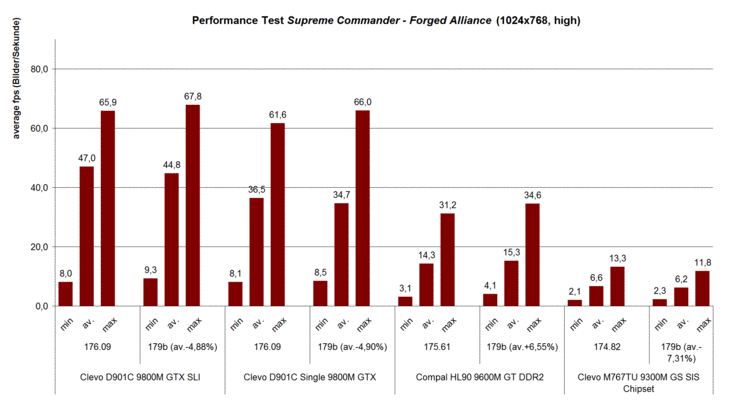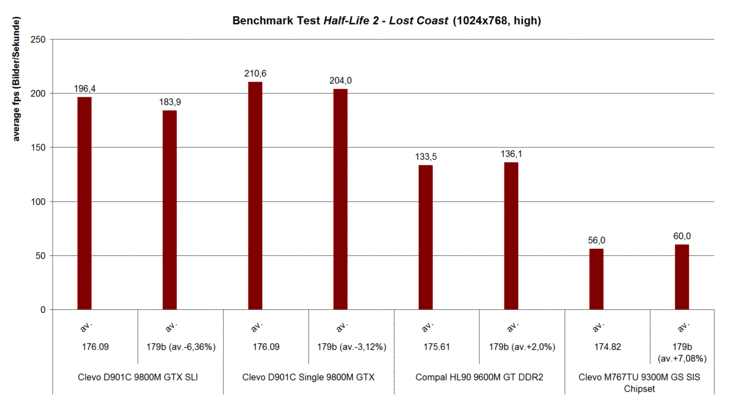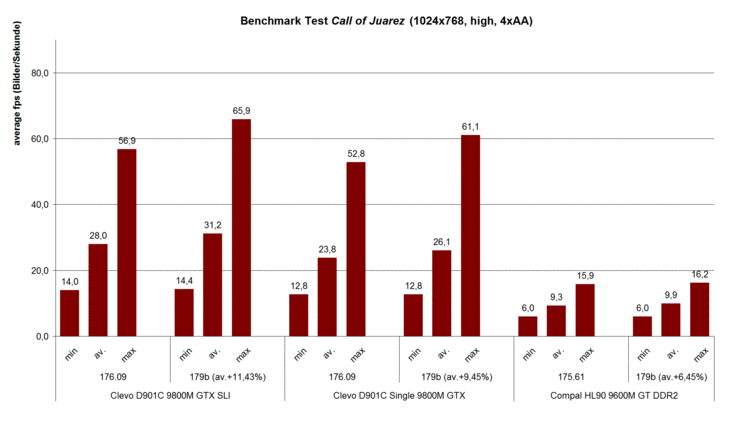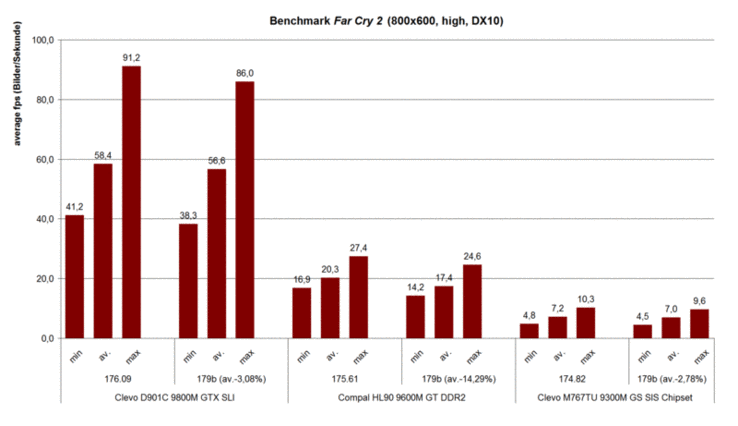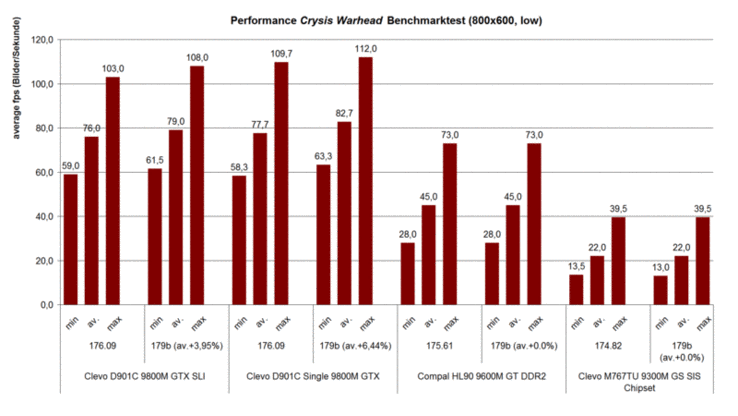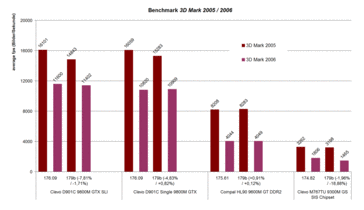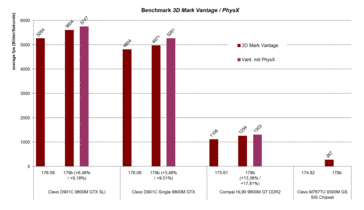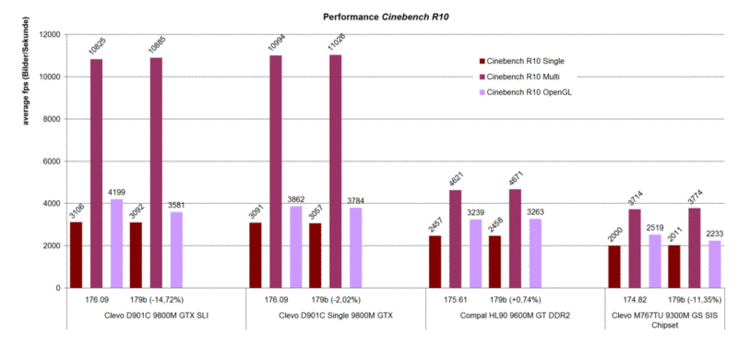New graphics card driver from NVIDIA for all laptops
179.28 for almost all GeForce graphics cards.
NVIDIA is releasing today the first in a series of laptop graphics drivers which is compatible with almost all recent notebooks. The new driver promises a lot: bug fixes, improvements in performance, CUDA and PhysX support. In this review, you will find out how the new graphics driver performed when it was used to run different NVIDIA graphics cards and play the latest games on them.

For the first time, NVIDIA wants to offer all (GeForce) laptop users the option to download graphics cards' drivers directly from the NVIDIA homepage. Till now this was only possible for a few models. From now on, however, every 3 months a new graphics card driver, for all notebooks, will be available on the NVIDIA site for download. In this way, laptops will be constantly updated with the latest improvements in performance and bug fixes.
Till date, this was the greatest criticism of laptop gamers, as the only way to get new graphics card drivers was to either rely on the kindness of the laptop producers, or to get modded desktop drivers (which do not have any guarantee) from sites like laptop2videogo.com.
GeForce 179.28 driver
The new GeForce 179.28 driver for notebook changes all that now, and it also promises bug fixes, more performance, and, for the first time ever, CUDA and PhysX support for most of the laptops. NVIDIA especially emphasizes the last two features (the CUDA and PhysX support) as they make their graphics cards shine out of the competition even more.
For whom?
The new driver is not designed for all available mobile graphics cards from NVIDIA. Instead it is restricted to the latest GeForce 9000M and 8000M series. In detail...
GeForce 98000M series
GeForce 9800M GTX
GeForce 9800M GTS
GeForce 9800M GT
GeForce 9700M GTS
GeForce 9700M GT
GeForce 9650M GT
GeForce 9650M GS
GeForce 9600M GT
GeForce 9600M GS
GeForce 9500M GS
GeForce 9500M G
GeForce 9300M GS
GeForce 9300M G
GeForce 9200M GS
GeForce 9200M GE
GeForce 8000M series
GeForce 8800M GTX
GeForce 8800M GTS
GeForce 8800M GS
GeForce 8700M GT
GeForce 8600M GT
GeForce 8600M GS
GeForce 8400M GT
GeForce 8400M GS
GeForce 8400M G
You can find further information on each one of the above graphics cards in our graphics card comparison or in the benchmark list.
A few handpicked notebooks were also excluded:
- Hybrid SLI laptops (Acer Aspire 7530, BenQ Joybook S42, Fujitsu Siemens Amilo Xi 3650, MSI EX630, Qosmio X305-Q706, Qosmio X305-Q708)
- Dell Vostro systems
- Lenovo ThinkPad notebooks
- Sony Vaio notebooks.
However, according to NVIDIA these should all be supported by future driver releases.
Performance
Of course we wanted to take a closer look at the imrovements in performance which the new driver offers. The best we to do this would be to take a few notebooks with the latest graphics cards, and test the driver with them. We will go into more details about our test in the second and third part of this review.
Let us begin instead with the official data released by NVIDIA. To get this data, NVIDIA took three older graphics cards of the GeForce 8000M series and compared the very old 156.90 driver to the new 179.28. Thanks to the many improvements made in the meantime, the results of the test were pretty amazing. The performance had increased by 10 to 110% according to the official data.
NVIDIA also examined the SLI performance with a GeForce 8800M GTX SLI combination. This time they used a somewhat newer, but still very old, 167.66 driver as a reference. The increases in performance that the results show are very impressive. However, they can be easily explained. The first SLI notebook driver sadly had a lot of flaws and was not optimized for games that were released much later. Each of the resolution/ AF/ AA levels were also picked after careful consideration. Despite all that, the increases in performance of up to 340% show how important it is, especially for gamers, to constantly update the driver.
Our test with the latest laptops
In the press conference NVIDIA talked of:
"Optimizations resulting in higher framerates and fluid gameplay, especially in SLI configurations."
and supported this proclamation with the above benchmarks. We wanted to test this assertion by testing the driver with the latest laptops. For our test we took three notebooks with up-to-date graphics cards from NVIDIA...
The challengers
Beginner's class
For the entry level we have the Nexoc Osiris E623 GT (Clevo M767TUB barebone) with the NVIDIA GeForce 9300M GS, with 256 MB GDDR2, the 2.0 GHz Core 2 Duo T5800, and 2 GBs of RAM. With the above specifications, the laptop costs less than 800 euros.
Middle class
The middle class is represented by the Nexoc Osiris E625 (Compal HL90 barebone) with the NVIDIA GeForce 9600M GT (with a slower 512 MB GDDR2), the 2.26 GHz Core 2 Duo P8400, and 2 GBs of RAM. This multimedia notebook costs less than 1000 euros, and thus offers a very interesting price/performance ratio.
High-end class
Top of the notch - We took the Nexoc Odin E 805 II (Clevo D901C barebone), with a 17 inch screen, as our representative for the high performance, elite laptops. A desktop Core 2 Duo Q9500 Quad-core with 2.83 GHz runs two GeForce 9800M GTX cards with a SLI connection. Supported by 2 GB of RAM and up to 3 hard disks, this monster is capable of tearing everything that gets in its way, and weighs up to 5.3 kg.
Our performance comparison is divided into game tests (games with integrated benchmarks) and sythetic benchmarks (like the 3D Mark series). We ran the benchmarks with the graphics driver that had been delivered with along with the graphics cards for the notebooks (the 174.82 for the 9300M, the 175.61 for the 9600M and the 176.09 for the 9800M GTX SLI).
We repeated each benchmark 3-4 times to get the results shown in the following diagrams.
First we tested a series of older games (especially interesting for the weaker test models). For this we chose the games that still required high performance, like World in Conflict (WIC), Half Life 2 - Lost Coast and Supreme Commander - Forged Alliance.
World in Conflict
WiC showed marginal changes between a resolution of 1024x768 very high and a resolution of 800x600 very low. Due to the fluctuations in the benchmark itself, these results are not worth noting. Only with the Odin E805II, with and without SLI, a resolution of 1920x1200, and details set to very high, could we observe an increase in performance of up to 25%. With the SLI configuration, WiC ran with 16 to 20 fps (the benchmark is very demanding and the strategy game does not necessarily need high frame rates).
Supreme Commander - Forged Alliance
Supreme Commander is still very demanding (especially when playing big multiplayer battles), and it excites the gamer with its combination of complexity with good graphics. We let the integrated benchmark, which shows a huge multiplayer battle in 1024x768 with high details (including 4x Anti-Aliasing), run on all of our notebooks.
The results were surprising. The frame rates decreased a little on all of the laptops except for the Nexoc E625 with the 9600M GT.
Half Life 2 - Lost Coast
Even the evergreen Half Life 2 (thanks to the pending episode 3) managed to get into our benchmark parkour. However, in the benchmark of Lost Coast, with a resolution of 1024x768 and high details, the negatives by far outweighed the postives. Still the special level ran smoothly on all the laptops.
Call of Juarez
The western shooter game, Call of Juarez, is another one of the games we tested. We used the available benchmarks for this game, testing it with a resolution of 1024x768 and 1920x1200, with high details and DirectX 10 effects.
The new driver scored really high in these tests. We concluded that all the notebooks had faster rendering (except for the Nexoc Osiris E623 GT on which the benchmark did not start).
Far Cry 2
Of course we could not exclude brand new games from our comparison. We took the "Africa shooter" Far Cry 2 to begin with. The game notified us that the graphics cards, which had been delivered with the laptops, were outdated; however, they rendered the game without any visible restrictions.
We were surprised that after the installation the performance on all platforms, with a resolution of 1024x768 and high details, decreased by a small amount. There was a slight increase in performance with the 9300M GS, but that happened only when the resolution was changed to 800x600 and the details were set to minimum. The 9600M GT was especially affected as it showed an average decrease of 14% in performance after 3 runs. We asked NVIDIA about this matter, and received the following answer:
"...Unfortunately, this is a known and current driver issue we have with the Benchmark utility within FC2. We’re currently working on a solution and will be offering that in a subsequent driver release."
So there is hope that in the next driver release the performance will increase significantly.
synthetic Benchmarks
We did not expect to see any great increases here, as most of the graphics cards are designed to be optimal for the synthetic benchmarks. Only with the 3D Mark Vantage could we observe noteworthy increases in performance. These were epecially big when the PhysX calculation, by the GPU, were activated. However, as the PhysX calculations are the work of the CPU, this would not really be fair in a model comparison.
The poor results of the new driver in the OpenGL Test of Cinebench R10 were a big negative suprise. In this test, the drivers, which were delivered with the laptops, had a clear advantage (except for the Compal HL90, which seems to be already delivered with a driver designed for heavy consumer usage). Users, who use OpenGL programs on a regular basis, should think twice before changing to the new driver.
CUDA & PhysX
One of the big improvements of the 179.28 driver is that it supports CUDA and PhysX. Due to this improvement, new uses of the graphics card have become possible, as the card can be used as a general processing unit.
Using the programming language C, CUDA makes it possible to directly access the processing units of the graphics card, and thus allows complex calculations to be stored. If used correctly, this can be significantly faster, due to the massive parallelism of the GPUs, than with today's processors. This is used currently, for example, by the video coding software "badaboom".
Badaboom makes it easy for even inexperienced users to convert their videos to formats which are compatible with mobile or media center devices with just a few easy steps. Currently the formats available are somewhat restricted, but the programmers are constantly expanding their range. The use of the graphics card for the coding of videos is what makes badaboom so special, as the performance achieved by using the graphics card is very high, when compared to the rate of coding achieved when using the CPU.
The second major use of CUDA is the current folding@home project. Their current client can use the processing power of the graphics card instead of having to use that of the CPU. This way there will be a lower CPU usage. Our colleagues from pcgameshardware.com (article in German) have an interesting article in which folding@home makes a comparison between the CPU and the graphics card (however it is desktop based).
The support of the Physics Engine PhysX by the graphics card is another recent addition. As a result, it is possible to store complex physical calculations on the graphics card, even one which is specifically assigned to this task. The performance of the GPU in this case is once again much better than when the main processing unit is used to do this work. However, a good graphics card is essential for this.
Using the new laptop driver, we took a closer look at the Cryostasis TechDemo on the SLI system. This shooter game should come out in 2009, and it heavily uses both DirectX 10 and PhysX. The techdemo, made available to us by NVIDIA, shows how impressive the performance of PhysX really is. Without hardware PhysX (with the GPU), Cryostasis achieved an average fps of 10.7 (Quad-core with 9800M GTX SLI). However, as soon as the PhysX is activated, the techdema runs at an average of 28 fps.
| Cryostasis technological demo | min fps | med fps | max fps |
|---|---|---|---|
| D901C SLI hardware PhysX | 16.2 | 28.0 | 90.1 |
| D901C SLI software PhysX | 3.9 | 10.7 | 99.7 |
We took a few special water levels from the game Crazy Machines 2, as a second example of the immense potential of PhysX. Without GPU PhysX, the frame rate dropped from 100 fps to 2 fps. With the PhsyX, the frame rate stayed at a playable 40 fps.
Of course, one should not be misled in the false direction by these technology demos. The game producers will always be careful not to exclude certain gamers just because they have weaker graphics cards or GPUs. Basically, it is possible to get more, or better, effects with a graphics card with PhysX ability. The first "major" game to show this will be Mirrors Edge, which allows more effects to be displayed by using PhysX.
Right now there are only a few techdemos and special levels which can significantly profit from PhysX. However, this could change with the release of Mirrors Edge in the beginning of 2009.
Verdict
The new 179.28 graphics driver is a milestone for two reasons. First, because it is the beginning of a new era of constant driver updates for laptop graphics cards. Additionally, this also removes the biggest critcism of laptop gamers around the world. From the results from NVIDIA, one can clearly see that the performance can be increased by a great deal, especially on older devices, with constant updates. Recently released laptops however, however, will have smaller increases in performance, if any. This should change though in a following release, as the first driver was designed rather for stability (for example, GTA 4 would profit from it).
The second reason is that for the first time ever a driver has offered support for CUDA and PhysX on laptops (except for a few notebooks, which are already delivered with the 179 drivers). At this time, the applications show the enormous potential of the GPU as a processing unit. The increases in performance, that are visible in the PhysX technological demos and badaboom, are especially impressive.
Keep it up NVIDIA. We are already looking forward to the next release...




